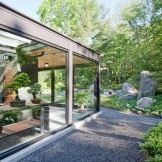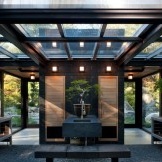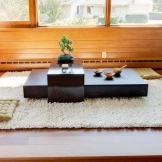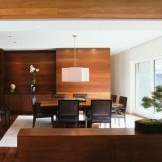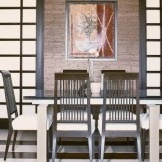Japanese bonsai - decorative tree photo in the interior
Japanese style interior is one of the most restrained and calm varieties of ethnic minimalist interior design. And today this oriental interior has simply captivated the hearts of Westerners. Japanese motifs in the interior do not at all imply any antiquity, but even on the contrary, it is today's Japanese that keeps pace with progress and at the same time preserves all its originality and mystery.
One of the integral parts of Japanese color is bonsai. In almost every style of interior, indoor plants are used as decor, and this article will focus on Japanese bonsai. In Europe, this decorative tree appeared at the beginning of the last century and in a short time became one of the favorite houseplants of many housewives. Nowadays, Japanese bonsai has become one of the most popular areas of floristry.
DIY bonsai
Growing Japanese bonsai can be attributed to science, because it is not at all easy to form a miniature tree on your own at home. Not just, but quite possible.
For this purpose, tropical or greenhouse plants are ideal, which can easily take root in the home environment. To create such a tree with your own hand, you must adhere to a number of rules.
- First of all, special attention should be paid to the choice of plants. In warm rooms, it is better to give preference to deciduous trees and shrubs, but conifers can easily take root in a room with a cool microclimate.
- Particular attention should be paid to watering and humidity, for each particular plant its own atmosphere must be respected.
- Mandatory transplantation every two years at the end of winter, until the deciduous plant begins sap flow. At the same time, the roots of the plant are slightly trimmed, removing all decayed tips.
- Constant crown formation. In order for a tree or shrub to have the shape of a Japanese bonsai, it should always be exposed to external influences on the crown. To do this, you can use copper or aluminum wire, and if the plant does not lend itself to such a formation, then use pruning. Pruning can be a skeleton-forming plant that stimulates and reduces size.
- For the effect of an old tree, branch splits are used and a small part of the bark is peeled off to give it appropriate scars. These procedures should be carried out with great care, since such actions can adversely affect the plant.
Another option for creating a decorative bonsai tree is applied art. Craftswomen often weave such trees from beads and beads, and also sculpt from polymer clay.
Bonsai in the interior
Whatever the decorative Japanese tree, it will fit perfectly in any room. Moreover, it is not necessary to make the entire interior style Japanese. Such an ornamental plant can easily fit into a classic living room or newfangled kitchen. The veranda with the whole greenhouse will look original, in which a huge number of colorful ornamental plants are collected.
So that this decor element does not seem lonely, in addition to it, you can place other plants in the room or hang on the walls of paintingss with a picture of nature.
Bonsai will look great in a room where the maximum amount of natural materials has been used in decoration and furniture.
If the plant has its own special color, it can be supported by other decorative elements, for example sofa cushions or wall decoration.
It is important enough for the general perception of the picture not only the plant itself, but also the pot in which it grows.Often, it is he who is an excellent link between the plant and the general style of the room.
Japanese bonsai will look original in combination with a chandelier made under a tree branch. This floral theme can be continued with wall decor.

Undoubtedly, the most harmonious bonsai will fit into the room with an interior in the Japanese style. In this case, the plant theme can be continued on the screen inherent in this direction.
Interior recommendations
Since the Japanese style is one of the areas of minimalism, this decorative plant will advantageously look exactly in the minimalist style, not overloaded with numerous small details, where the mini tree will become the main element of the decor.
Another companion to Japanese bonsai is contrasts. It can be a variety of combinations, such as dark furniture and light walls, or vice versa, as well as a dark floor and a white carpet on it. In addition to combining dark and light, you can also use bright and rich colors. Bonsai will look very organic in such an atmosphere for the simple reason that the Japanese style of the interior is based precisely on such color schemes. If it is decided that a decorative Japanese bonsai plant will be located in the room, then special attention should be paid to the choice of furniture. The maximum of simplicity and naturalness is the main rule for creating a harmonious interior using Japanese bonsai as a decorative element.







